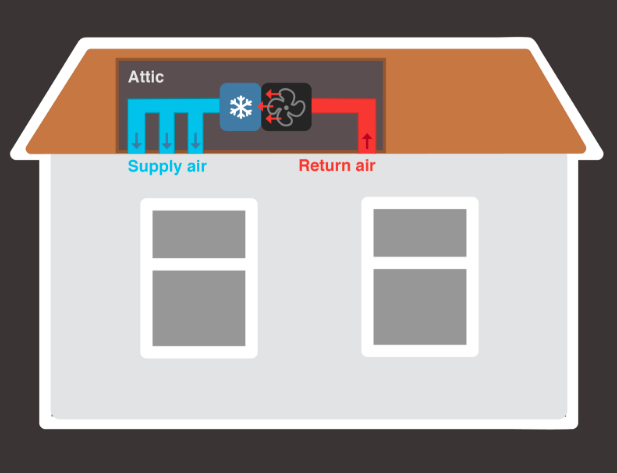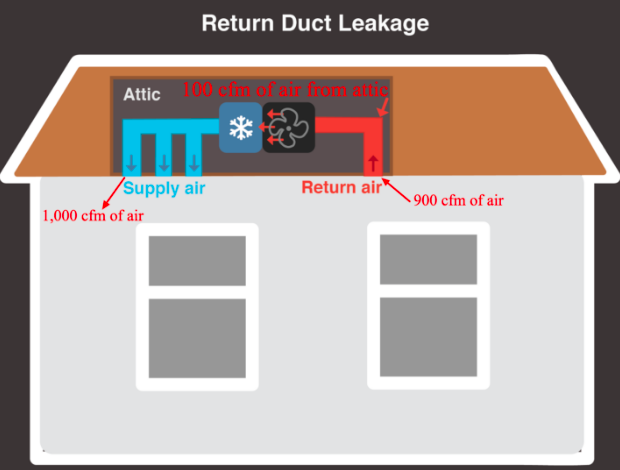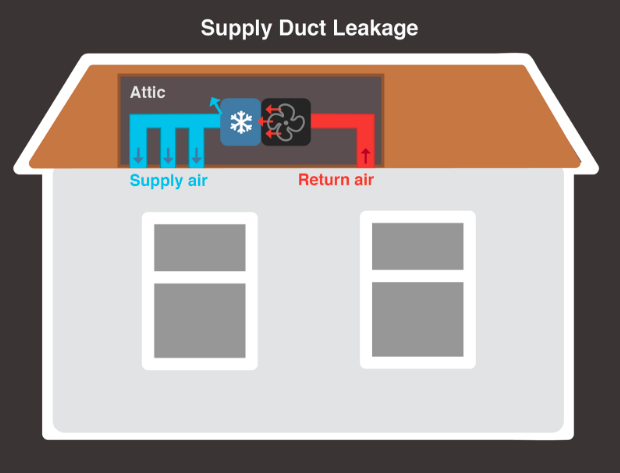This Hidden Leak in Your Home Runs Up Energy Bills by 20%
March 06, 2017
Let’s say your energy bill this past month was around $115. Now, let’s say you had the option to tack on $23-$35 on top of that bill. Would you do it?
Of course not.
But there’s a good chance you’re doing exactly that every month if you have air duct leakage. (Spoiler alert: You most likely DO have duct leaks.)
In fact, according to Energy Star, the typical home wastes 20-30% of conditioned air via leaks in the air duct system.
We’ll explain exactly what duct leakage is, how it increases your energy bills and what you can do about it.
Want to learn more about how you can save 20% on heating/cooling bills with our professional duct sealing services? Contact us now.
What is “duct leakage”?
Duct leakage refers to air that leaks out of (or into) the ductwork in your home. And usually that air sneaks in or out of holes in old ductwork or disconnected ducts.
Now before we get into why duct leaks are expensive, let’s take a quick look at how your ducts work:
Step 1: Your return ducts suck air from your home into your HVAC system
Step 2: The HVAC system either cools or heats that air
Step 3: Your supply ducts blow that air throughout your home

Now let’s take a closer look at how leaky ducts increase monthly bills...
How duct leaks increase your energy bills
Leaky ducts it cause your HVAC system to work harder and longer to reach your desired temperature, which in turn raises your energy bills.
But there are actually 2 different types of duct leakage:
Return duct leakage
Supply duct leakage
Let’s look at exactly how each type of leakage affects your energy bills.
Return duct leakage
Your return ducts are responsible for sucking air from your home into the AC.
Now let’s say that your return ducts are designed to suck in around 1000 cfm (cubic feet per minute) of air. But leaks in the return ducts suck in about 100 cfm of air from unconditioned areas like the attic or basement. That means the return ducts only have to suck in 900 cfm from your home.
So here’s what we have: 900 cfm of air sucked out of your home while 1000 cfm of air is blown back out into your home. 100 cfm of extra air is blown into your home during each heating/cooling cycle, causing “positive pressure”.

So where does that extra air go? It’s forced out of your home through tiny cracks, doors, windows, etc. And that’s essentially like letting dollar bills float out of your home since you just paid for that conditioned air, but it’s not staying in your home.
Supply duct leakage
Your supply ducts are responsible for transporting conditioned air throughout your home.
But if those supply ducts are leaky, they allow conditioned air to sneak out of the ducts before they make it to your home. Which means your attic or basement gets a nice blast of conditioned air while your home gets very little, leaving you less comfortable and your energy bills higher.

Not sure if you have leaky ducts? Some signs of leaky ducts include:
Higher-than-average utility bills
Uneven cooling/heating throughout the house
Excessive amounts of dust in your home
Visual confirmation that air is leaking from your ducts
For more information on determining whether your air ducts are leaky, check out our blog “How Can I Tell if My Air Ducts Are Leaking?”
The solution to leaky ducts? Duct sealing.
Professional duct sealing eliminates costly duct leaks and can save you up to 20% on your heating/cooling bills.
Duct sealing also:
Increases comfort
Improves indoor air quality (Related: Why Is My Home So Dusty?)
Keeps your family safe in the winter by preventing “backdrafting” of dangerous gases
Want to learn more about our professional duct sealing services? Just contact us today.
- Posted in:
- Energy Efficiency

